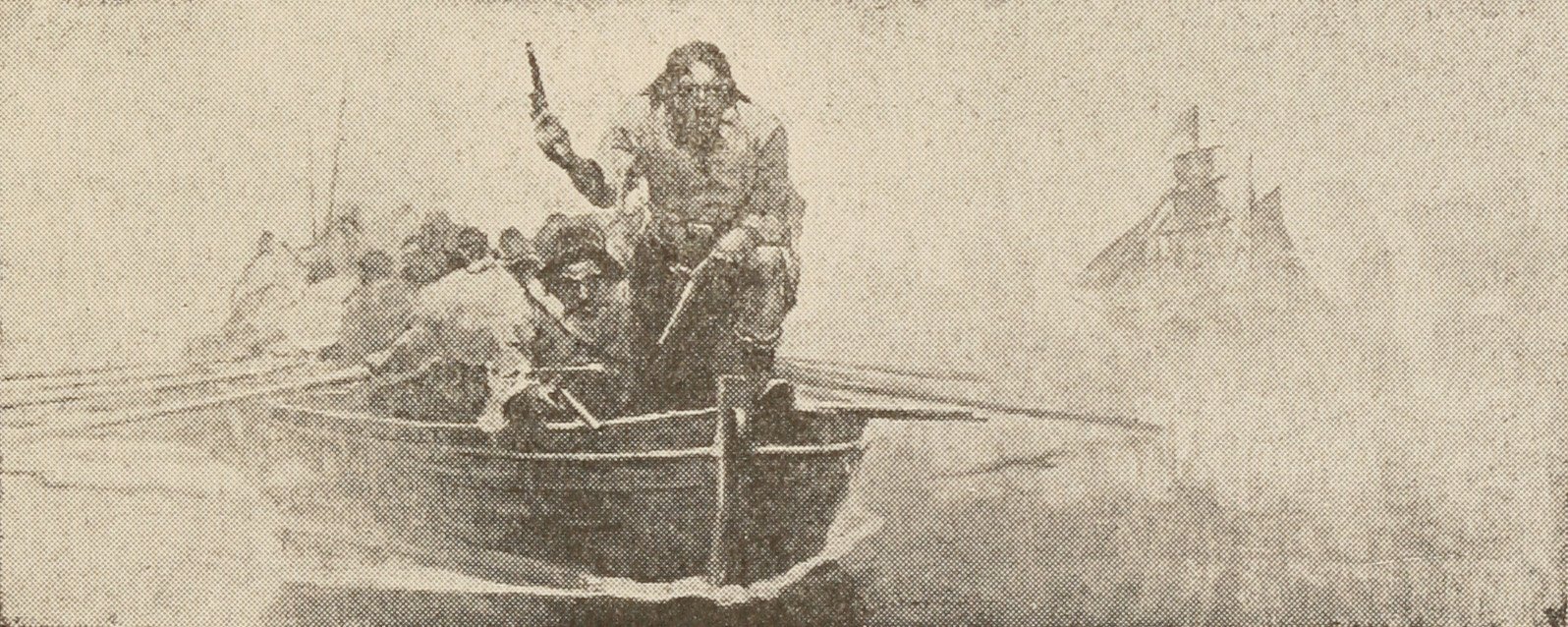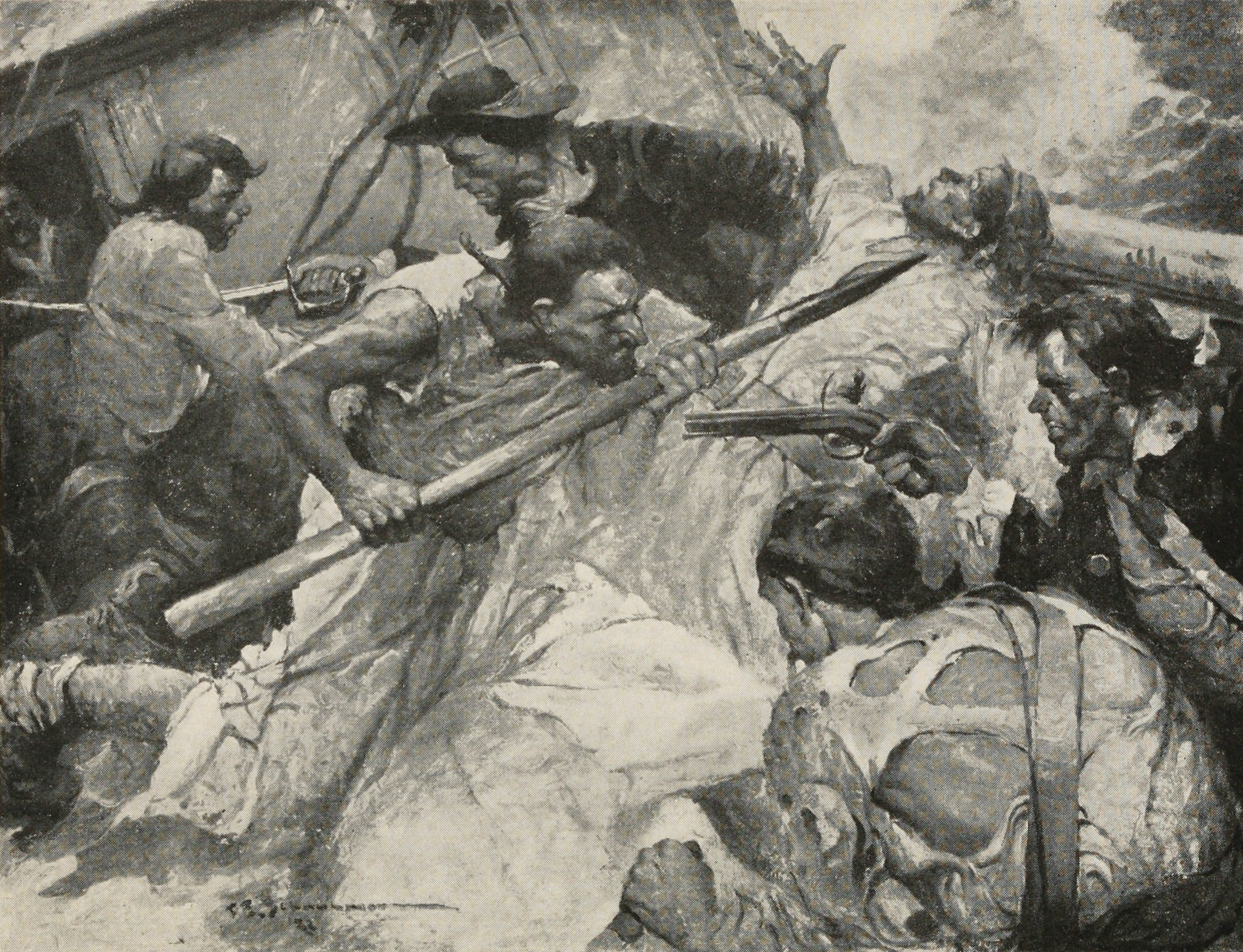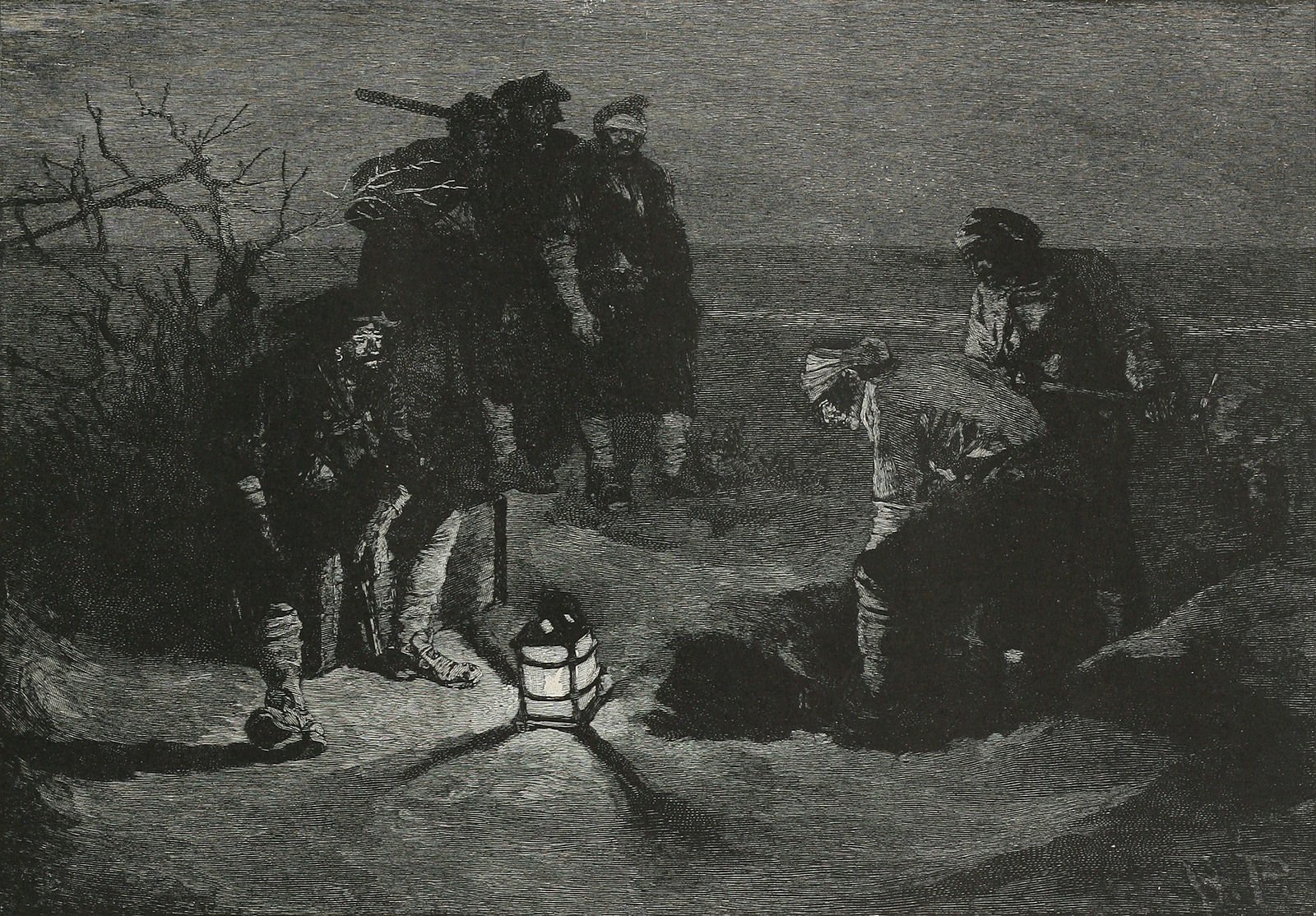A fierce battle had just taken place, right on the outskirts of North Carolina’s coast. You wouldn’t have known it at first, hardly anyone did. It was only after, with a dangling severed head on the British ship Jane, that news spread.
It was the sign of a crumbled empire, of an era coming to an end. Merchants and freight ships could all take a breath of relief. Whatever that severed, rotting head told everyone was clear.
Blackbeard was dead.

With the age of exploration during the 16th and 17th centuries came ships in droves – exploring uncharted waters, ushering new worlds. An era of plundering, cannon fodder, and clashing of steel.
Though romanticized in books and film, this was a time where life on the high seas could mean life and death at any moment, either by the elements, your own ship, or that looming vessel that eerie becomes closer with each passing minute.
This was the Golden Age of Piracy.
Out of all those looking to find their fortune and glory in blood and smoke, none were as ruthless and as notorious as that of Edward Teach.
Though, he’s more well-known as Blackbeard.
Despite such a brazen reputation, there is little about Blackbeard’s life before his life of piracy. Even his name is shrouded in uncertainty. Scholars can’t seem to make a good enough decision whether Edward Teach or Edward Thatch was the swashbuckler’s Christian given name. Even the names themselves have at least a dozen varied spellings.
Not even his birth is well-documented. Speculation can be said that Blackbeard was maybe born in Bristol, England, and probably around 1680. Not even the age at which Blackbeard died is well-documented, though scholars suspect that he was between 35 and 40.
At the very least, what is marginally known is that Blackbeard was a privateer in the War of Spanish Succession – or Queen Ann’s War.
After the war, the island of Nassau became a haven for pirates. It was lost to the British, and with no central power claiming dominion over it, pirate Benjamin Hornigold took the opportunity and claimed it for himself. Over a thousand pirates inhabited this pirate republic.

One of them was Edward Teach, who had nowhere to go and nothing to do after the war. Hornigold took him under his wing. By 1716, Teach was Hornigold’s lieutenant, manning his own ship amongst the many Hornigold had at his disposal.
This crew pillaged throughout the Caribbean and the eastern shores of North America, hijacking Spanish and merchant ships, taking everything that was and wasn’t bolted down.
With Hornigold, Teach was ruthless. Enemies described Teach as a brute of man, six pistols strapped to his chest, lit fuses surrounding his head underneath his hat, and a long black beard covering his face.
A year later, Hornigold accepted a pardon from King George, and Blackbeard was left to command his own ship. Hornigold and Blackbeard were able to frighten empires with their piracy and debauchery.
But Blackbeard by himself?
He was able to bring them to their knees.

In the Autumn of 1717, Blackbeard and his crew ran down a French slave ship called La Concorde. She was fast, large, more than enough to scare a traveling ship. And worse of all, it was manned by a pirate. Blackbeard made port and outfitted with enough cannons and rigging to blow a man-o-war out of the water.
But more importantly, she needed a name. The ship was British, taken by the French. Perhaps some anger held on after the war, or perhaps he had an affinity for the old ruler. Whatever the case, the ship’s new name was clear.
In the coming months, Blackbeard would amass a crew of 300 men, spread out ships of three, with Queen Ann’s Revenge as the flagship.
They further terrorized the south Atlantic, nothing was out of their grasp to take as their own. But Blackbeard was bold. And he was arrogant.
He wanted to prove he could do anything. So, in May of 1718, his fleet traveled north to British colonies in America.
It was there that his fleet docked in the town of Charles Town, South Carolina. The town’s name would eventually be renamed Charleston. With his fleet docked, they blockage the town for a week, capturing any ship that came in or out of the town.
Blackbeard’s demand was simple. A crate of medicine for the lives of the crew of the Crowley, one of the ships captured. Naturally, the colony agreed and the fleet fled. South Carolina could breathe again. The same couldn’t be said for North Carolina.
What happened afterward was a bizarre chain of events. The fleet attempted to traverse a series of inlets in North Carolina, only for Queen Ann’s and another ship to be grounded in a sandbar. Instead of trying to rescue half his fleet and his flagship, he abandoned them and a large portion of his crew.
Historians believe that he did this intentionally to break up his crew, perhaps in an attempt to be less noticeable out on the seas and in large ports.
Next, Blackbeard made port at the small village of Bath in North Carolina. There he met with Governor Charles Eden.
He asked to be pardoned.
This chain of events will lead to the death of Edward Teach in six months’ time.

For all intents and purposes, Blackbeard’s strategy was genius
A full pardon for him and his crew in exchange for protection and a healthy supply of resources and wealth for the Bath, as long as no questions were asked about it. It was bribery at its finest and it was legal. They had the backing of a governor on their side.
So, for appearance’s sake, Blackbeard and his men settled down in Bath and built houses. Blackbeard even married a local girl. As long as anyone was concerned, Blackbeard’s tyranny was at an end.
But unbeknownst to the town, he and his crew would slip off into the winding creeks to their true home, Ocracoke Island. There they had access to the open seas to plunder ships in secret, returning the goods to Bath as provisions found in “shipwrecks.”
It should have been the perfect retirement plan if Lieutenant Governor Alexander Spotswood of Virginia hadn’t kept close surveillance of Blackbeard and his men. He feared what the pirate’s continued presence in the colonies would do. He didn’t want to find out.
Spotswood didn’t have the legal means to send a battalion of men to another state, but he wasn't afraid of getting his hands dirty. He made contact with two British frigates to end this reign of terror once and before.
Two ships entered the North Carolina coastlines. Two ships left.
One ship carried the severed head of Edward Teach.
Blackbeard was dead.
Though stories tell otherwise.

To this day, people believe that the ghost of Blackbeard roams Ocracoke Island.
This legend originates from the moment his head left his body, his body dumped into the sea. They say he swam around Jane three times before his headless corpse sank to the bottom of the sea.
Some people have said they have seen a glowing light in the waters of Ocracoke Island where Blackbeard would usually dock. They say it's his spirit, still swimming, still in search of his head.
Others have seen his headless body on the beach, looking for his lost parts.
And when the nights are black and restless, where rough waves and winds crash on coasts and rock ships to and fro, if you listen carefully, you can hear the screams of Blackbeard, bellowing out, “WHERE IS MY HEAD!”
Who has the heart to tell him that it’s in Davy Jones’s Locker, rotted and bloated, fuses still lit around it?
